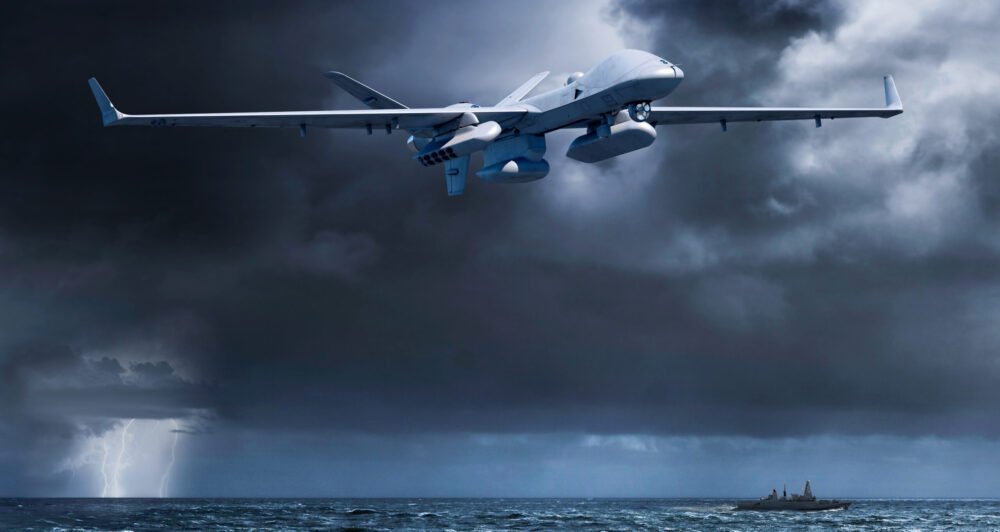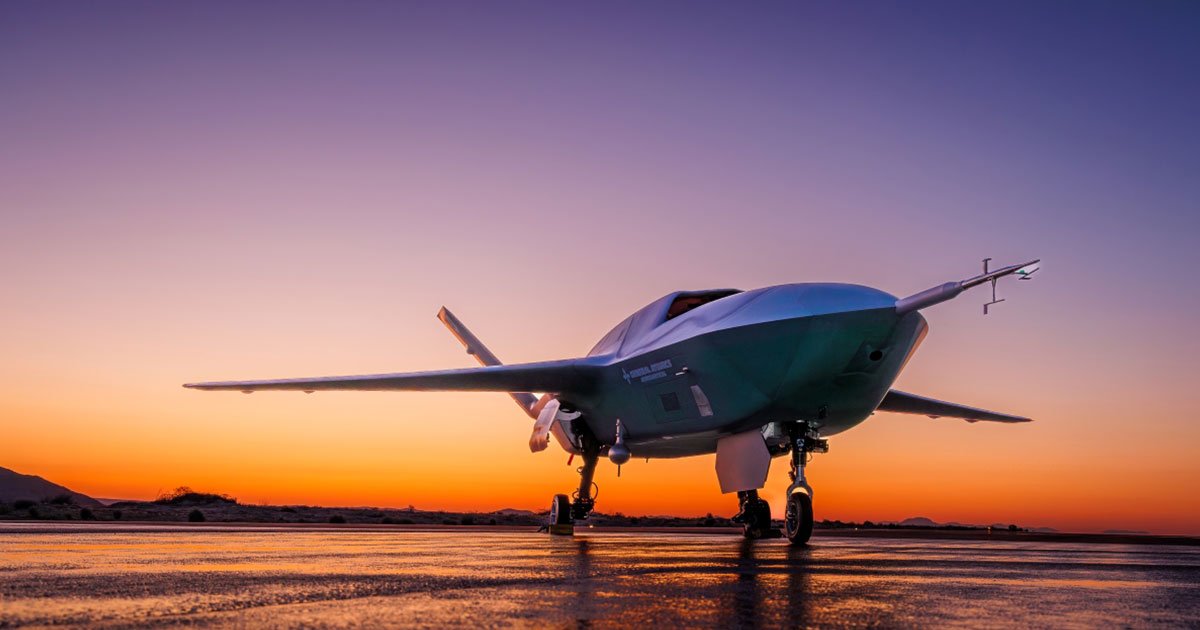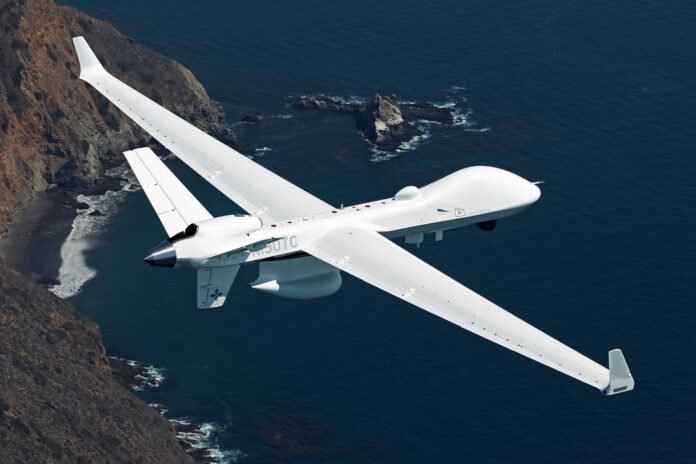India’s rise as a global technology powerhouse is undeniable. With its thriving domestic aerospace industry, ambitious defense modernisation goals, and strategic focus on self-reliance, India is transforming into a beacon of innovation and technological leadership.
Nowhere is this more evident than its acquisition of the MQ-9B SeaGuardian® and its blossoming partnership with General Atomics Aeronautical Systems, Inc. (GA-ASI), which promises to bolster India’s defence capabilities while expanding its domestic industrial base.
The MQ-9B SeaGuardian represents the pinnacle of unmanned technology, combining advanced computing, sensor fusion capabilities, and an intuitive user experience to deliver unmatched situational awareness and operational flexibility. For India, this acquisition is a strategic paradigm shift. It addresses critical gaps in intelligence, surveillance, and reconnaissance (ISR) while enhancing India’s ability to secure its borders, monitor maritime domains, and deter adversarial actions.
The MQ-9B SeaGuardian represents the pinnacle of unmanned technology, combining advanced computing, sensor fusion capabilities, and an intuitive user experience to deliver unmatched situational awareness and operational flexibility. For India, this acquisition is a strategic paradigm shift. It addresses critical gaps in intelligence, surveillance, and reconnaissance (ISR) while enhancing India’s ability to secure its borders, monitor maritime domains, and deter adversarial actions
Yet the significance of this partnership extends beyond the battlefield.
Through collaboration with Indian defence firms and integration into India’s defence ecosystem, the MQ-9B programme is poised to elevate India’s innovation landscape and contribute to its broader goal of becoming a net exporter of defence technology.
MQ-9B: A Platform Built for Modern Challenges
The MQ-9B SeaGuardian is more than an unmanned aerial vehicle. It is a comprehensive solution to the modern challenges of ISR, border security, and maritime surveillance.
Designed to operate in contested environments, the MQ-9B offers capabilities that are critical for India’s evolving security doctrine.

The platform is powered by advanced computing systems that enable real-time data processing and decision-making. Its sensor fusion capabilities integrate inputs from multiple sources — electro-optical/infrared (EO/IR) cameras, radar systems, and signals intelligence — into a cohesive operational picture. This allows Indian forces to detect, track, and respond to threats with unparalleled precision.
In regions like Ladakh and Arunachal Pradesh, where rugged terrain limits traditional surveillance methods, the MQ-9B’s ability to provide high-resolution imagery and persistent monitoring is a game-changer.
The user experience of the MQ-9B is equally transformative.
Operators benefit from intuitive interfaces and decision-support tools that simplify mission planning and execution. This reduces cognitive load, enhances situational awareness, and ensures that critical decisions are made swiftly and accurately.
Moreover, the MQ-9B’s interoperability with US and NATO-standard systems facilitates seamless integration into joint operations, supporting India’s vision of becoming a net security provider in the Indo-Pacific.
By involving Indian firms in the production and maintenance of MQ-9Bs, GA-ASI is fostering the growth of India’s aerospace industry and creating opportunities for deeper partnership
Building Indigenous Capability Through Collaboration
While the MQ-9B is an American-made platform, the partnership between GA-ASI and India is deeply rooted in collaboration.
The acquisition deal includes provisions for Indian defence firms to participate in the programme, aligning with India’s “Make in India” initiative.
One notable example of this collaboration is GA-ASI’s strategic partnership with Bharat Forge, announced in January 2023. This partnership encompasses the manufacturing of landing gear components, subassemblies, and UAV assemblies, ensuring that critical elements of the MQ-9B program are produced domestically.
Additionally, GA-ASI’s Indian subsidiary, General Atomics Global India Pvt. Ltd., has been contracted to provide performance logistics and repairs for the MQ-9Bs, further integrating the platform into India’s defense ecosystem.
These initiatives are not just about meeting immediate operational needs — they are about building long-term indigenous capability.
The partnership between India and GA-ASI should not be limited to the MQ-9B. As India continues to field cutting-edge technology, the MQ-9B programme could serve as a stepping stone for future collaboration in the field of unmanned systems
By involving Indian firms in the production and maintenance of MQ-9Bs, GA-ASI is fostering the growth of India’s aerospace industry and creating opportunities for deeper partnership.
The MQ-9B programme also has the potential to create high-skill jobs, stimulate research and development, and establish India as a hub for UAV innovation. As India continues to invest in its domestic aerospace capabilities, the knowledge and expertise gained from the MQ-9B partnership will serve as a foundation for future advancements.
Expanding Horizons: Future Collaboration Opportunities
The partnership between India and GA-ASI should not be limited to the MQ-9B. As India continues to field cutting-edge technology, the MQ-9B programme could serve as a stepping stone for future collaboration in the field of unmanned systems.
As the global defence landscape evolves, GA-ASI is at the forefront of developing next-generation technologies that can further enhance India’s capabilities.
One such opportunity lies in the realm of Combat Collaborative Aircraft (CCA).

These unmanned platforms are designed to operate alongside manned fighter jets, providing complementary capabilities such as electronic warfare, target acquisition, and decoy operations.
By leveraging artificial intelligence and autonomous systems, CCAs can significantly enhance mission effectiveness while reducing risk to human pilots.
Another promising avenue is the development of launched effects, such as GA-ASI’s Portable Expeditionary Launched Effect (PELE) unmanned aircraft system (UAS) unveiled at the Paris Air Show earlier this year.
These small, expendable systems can be deployed from larger platforms to perform specialised tasks, ranging from reconnaissance to electronic jamming or kinetic strikes.
For India, integrating launched effects into its defence strategy could provide a cost-effective way to expand its ISR and strike capabilities across diverse operational domains.
By collaborating on these advanced technologies, India and GA-ASI can continue to push the boundaries of unmanned systems, enhancing India’s defence posture and cementing its position as a global leader in UAV innovation.
As India continues its journey toward self-reliance and technological excellence, the MQ-9B programme stands as a shining example of what can be achieved through strategic partnerships, visionary leadership, and a shared commitment to innovation
A Bright Future
India’s partnership with GA-ASI on the MQ-9B SeaGuardian is a testament to the country’s emergence as an innovation nation and technology powerhouse.
By fielding one of the most advanced unmanned systems on Earth, India is addressing critical security challenges while enhancing its operational flexibility and situational awareness.
At the same time, the collaboration with GA-ASI is driving the growth of India’s defence industrial base, fostering indigenous capability, and creating opportunities for deeper partnership.
Looking ahead, the India-GA-ASI relationship holds immense potential for future collaboration. Whether through Combat Collaborative Aircraft, launched effects like the PELE UAS, or other next-generation technologies, this partnership is poised to redefine the landscape of unmanned systems and elevate India’s status as a global leader in defense innovation.
As India continues its journey toward self-reliance and technological excellence, the MQ-9B programme stands as a shining example of what can be achieved through strategic partnerships, visionary leadership, and a shared commitment to innovation.
Together, India and GA-ASI are not just shaping the future of unmanned systems — they are shaping the future of global security.
–The writer is Chief Executive at General Atomics Global Corporation. The views expressed are of the writer and do not necessarily reflect the views of Raksha Anirveda






